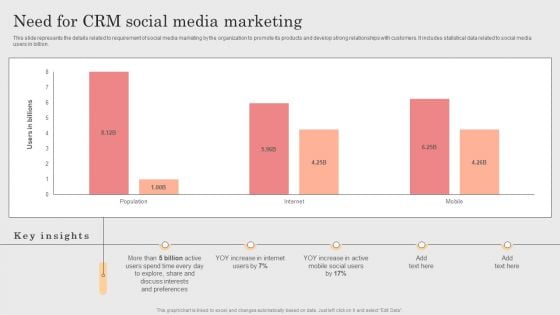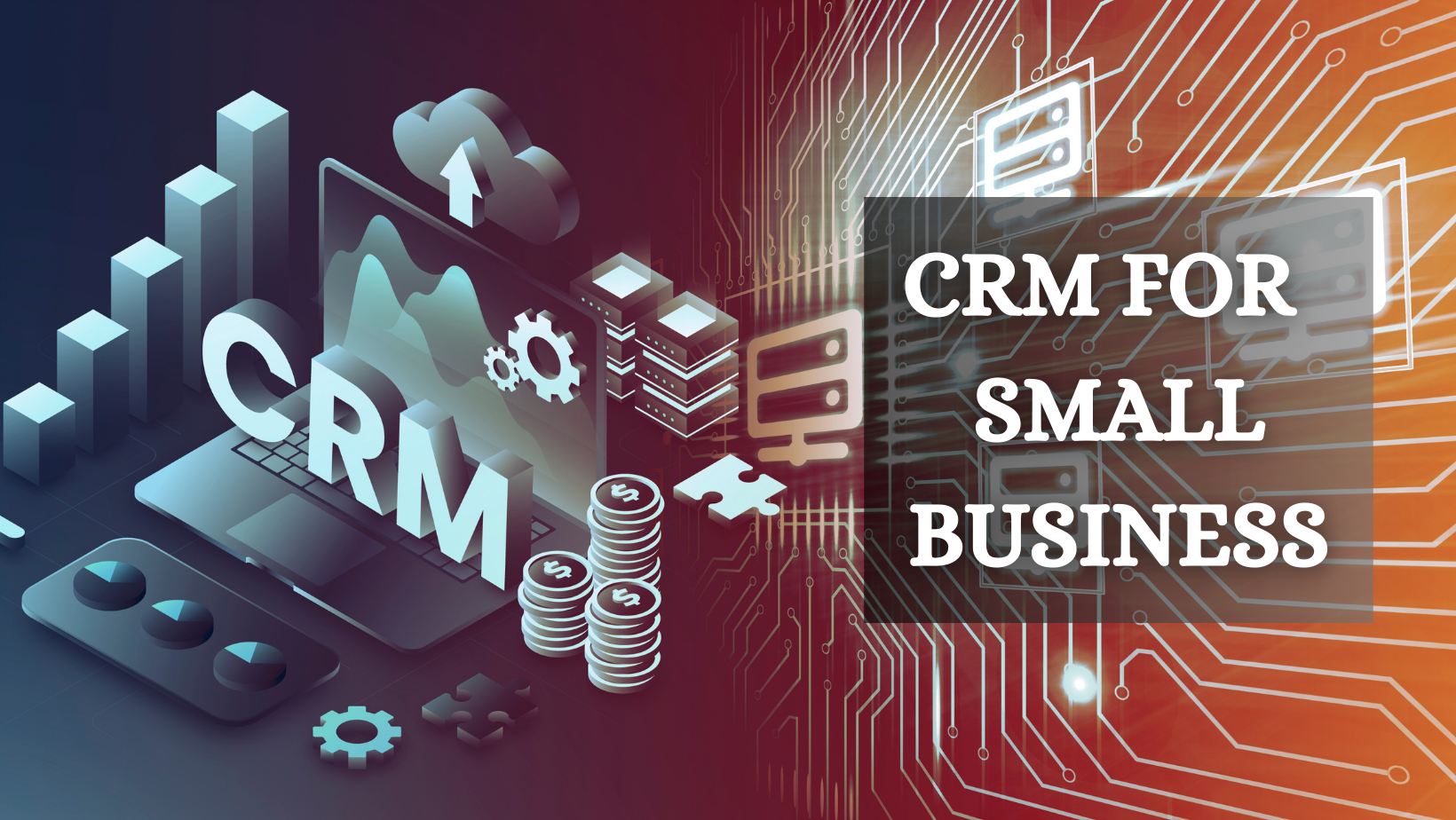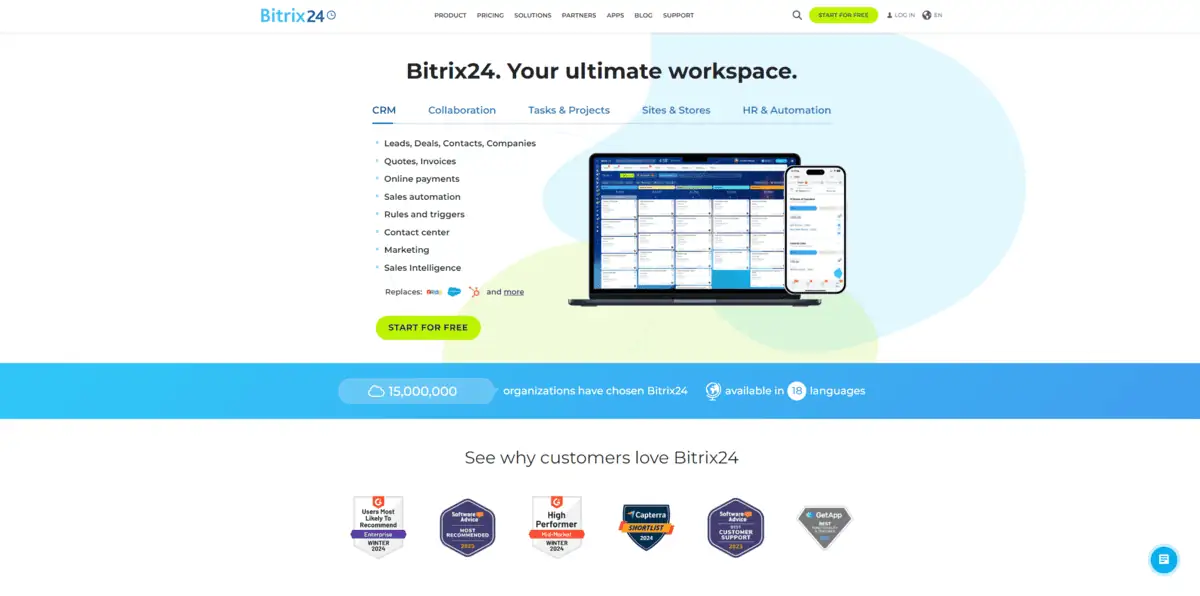Unlocking Marketing Synergy: CRM, Social Media, and the Power of Seamless Integration

The Dawn of Integrated Marketing: Why CRM and Social Media Need to Be Best Friends
In today’s hyper-connected world, businesses are constantly seeking ways to understand and engage with their customers more effectively. The rise of social media has revolutionized how companies interact with their audience, offering unprecedented opportunities for brand building, lead generation, and customer service. Simultaneously, Customer Relationship Management (CRM) systems have become indispensable tools for organizing customer data, streamlining sales processes, and personalizing marketing efforts. The true magic, however, happens when these two powerful forces – CRM and social media – are integrated. This article delves into the intricacies of CRM marketing social media integration, exploring its benefits, strategies, and best practices to help you unlock the full potential of your marketing efforts.
Understanding the Core Components: CRM and Social Media Marketing
What is CRM? The Heart of Customer Relationships
At its core, a CRM system is a centralized database designed to manage all interactions with current and potential customers. It acts as a single source of truth, housing valuable information such as contact details, purchase history, communication logs, and preferences. This comprehensive view allows businesses to:
- Personalize interactions: Tailor marketing messages and offers based on individual customer needs and behaviors.
- Improve sales efficiency: Streamline the sales process by providing sales teams with quick access to relevant customer information.
- Enhance customer service: Offer faster and more effective support by having a complete understanding of customer interactions.
- Forecast sales: Analyze historical data to predict future sales trends and make informed business decisions.
Popular CRM platforms include Salesforce, HubSpot, Zoho CRM, and Microsoft Dynamics 365.
Social Media Marketing: The Voice of Your Brand
Social media marketing encompasses the use of social media platforms like Facebook, Instagram, Twitter, LinkedIn, and TikTok to connect with your target audience, build brand awareness, and drive engagement. It involves creating and sharing content, running targeted advertising campaigns, and monitoring social conversations. Effective social media marketing can:
- Increase brand visibility: Reach a wider audience and establish a strong online presence.
- Drive website traffic: Direct potential customers to your website through engaging content and strategic links.
- Generate leads: Capture contact information from interested prospects through social media campaigns.
- Foster customer loyalty: Build relationships with customers by interacting with them, responding to their queries, and providing valuable content.
Key social media marketing strategies include content marketing, social media advertising, influencer marketing, and community management.
The Power of Integration: Why CRM Marketing Social Media Integration is Crucial
The real power lies in integrating these two components. When CRM and social media are seamlessly connected, businesses gain a 360-degree view of their customers, enabling them to create highly personalized and effective marketing strategies. The benefits of integration are numerous:
Enhanced Customer Understanding
By integrating social media data into your CRM, you gain a deeper understanding of your customers’ interests, behaviors, and preferences. This allows you to:
- Identify customer segments: Group customers based on their social media activity and tailor your marketing messages accordingly.
- Track customer sentiment: Monitor customer feedback and sentiment towards your brand on social media.
- Discover customer insights: Gain valuable insights into customer needs and pain points.
Improved Lead Generation and Qualification
Social media can be a powerful lead generation tool. CRM integration allows you to:
- Capture leads from social media: Automatically capture contact information from leads generated through social media campaigns.
- Qualify leads more effectively: Use social media data to assess lead quality and prioritize follow-up efforts.
- Nurture leads with personalized content: Deliver targeted content to leads based on their social media activity and interests.
Personalized Marketing Campaigns
With integrated data, you can create highly personalized marketing campaigns that resonate with individual customers. This includes:
- Targeted advertising: Run social media advertising campaigns that are tailored to specific customer segments.
- Personalized content: Deliver personalized content to customers based on their social media activity and CRM data.
- Automated email marketing: Trigger automated email campaigns based on customer interactions on social media.
Streamlined Sales and Customer Service
Integration can also improve sales and customer service efficiency:
- Sales team empowerment: Provide sales teams with access to social media data to better understand customer needs and tailor their approach.
- Improved customer service: Enable customer service representatives to quickly access customer information and resolve issues more effectively.
- Faster response times: Respond to customer inquiries and complaints on social media more quickly.
Strategies for Successful CRM Marketing Social Media Integration
Implementing a successful integration strategy requires careful planning and execution. Here are some key strategies to consider:
1. Choose the Right Tools: Selecting the Right CRM and Social Media Platforms
The first step is to select the CRM and social media platforms that best fit your business needs. Consider factors such as:
- Features: Ensure that the platforms offer the features you need to manage your customer relationships and social media marketing efforts.
- Integration capabilities: Choose platforms that seamlessly integrate with each other. Look for native integrations or third-party connectors.
- Scalability: Select platforms that can scale with your business as it grows.
- Budget: Consider the cost of the platforms and any associated implementation and maintenance fees.
Popular CRM platforms like Salesforce, HubSpot, and Zoho CRM offer robust integration capabilities with various social media platforms. Similarly, social media management tools like Hootsuite and Sprout Social often integrate with popular CRM systems.
2. Define Your Goals and Objectives: Setting Clear Objectives
Before you begin integrating your CRM and social media platforms, it’s crucial to define your goals and objectives. What do you hope to achieve through integration? Some common goals include:
- Increasing lead generation: Capture more leads from social media.
- Improving customer engagement: Increase engagement on social media and build stronger customer relationships.
- Enhancing customer service: Provide faster and more effective customer service.
- Boosting sales: Increase sales by personalizing marketing efforts and streamlining the sales process.
Clearly defined goals will help you measure the success of your integration efforts.
3. Data Mapping and Synchronization: Mapping and Synchronizing Data
Data mapping is the process of identifying and mapping the fields in your CRM and social media platforms. This ensures that data is synchronized accurately between the two systems. Consider the following:
- Identify key data points: Determine which data points you want to synchronize, such as contact information, purchase history, and social media activity.
- Map fields: Map the corresponding fields in your CRM and social media platforms.
- Choose a synchronization method: Determine how data will be synchronized, such as real-time synchronization or scheduled batch updates.
Proper data mapping is essential for ensuring data accuracy and consistency.
4. Implementation and Training: Implementing and Training Your Team
Once you’ve chosen your platforms, defined your goals, and mapped your data, it’s time to implement the integration. This may involve:
- Setting up the integration: Follow the instructions provided by your CRM and social media platforms to set up the integration.
- Testing the integration: Test the integration to ensure that data is being synchronized correctly.
- Training your team: Train your team on how to use the integrated systems and leverage the data to improve their performance.
Proper training is crucial for ensuring that your team can effectively use the integrated systems and achieve your goals.
5. Monitoring and Optimization: Monitoring and Optimizing Your Efforts
After implementing the integration, it’s important to monitor your results and make adjustments as needed. Track key metrics such as:
- Lead generation: Track the number of leads generated through social media.
- Customer engagement: Monitor customer engagement on social media.
- Website traffic: Track website traffic from social media.
- Sales: Measure the impact of integration on sales.
Use the data to identify areas for improvement and optimize your integration strategy. This may involve adjusting your marketing campaigns, refining your targeting, or optimizing your data synchronization process.
Best Practices for CRM Marketing Social Media Integration
To maximize the effectiveness of your CRM marketing social media integration, consider these best practices:
1. Prioritize Data Privacy and Security
Always prioritize data privacy and security. Comply with all relevant data privacy regulations, such as GDPR and CCPA. Ensure that your CRM and social media platforms have robust security measures in place to protect customer data. Be transparent with your customers about how you are using their data.
2. Personalize Your Interactions
Use the integrated data to personalize your interactions with customers. Tailor your marketing messages, offers, and content to individual customer needs and preferences. This will increase engagement and drive conversions.
3. Segment Your Audience
Segment your audience based on their social media activity and CRM data. This will allow you to create more targeted and effective marketing campaigns. For example, you can segment your audience based on their interests, demographics, purchase history, or engagement levels.
4. Automate Your Workflows
Automate your workflows to improve efficiency and save time. Use automation tools to trigger email campaigns, update customer records, and track customer interactions. This will free up your team to focus on more strategic tasks.
5. Continuously Test and Optimize
Continuously test and optimize your integration strategy. Experiment with different marketing campaigns, targeting strategies, and content formats. Analyze your results and make adjustments as needed to improve your performance.
Real-World Examples: CRM Marketing Social Media Integration in Action
Let’s explore some real-world examples of how businesses are successfully integrating CRM and social media:
Example 1: E-commerce Retailer
An e-commerce retailer integrates its CRM with Facebook and Instagram. When a customer browses a product on their website and adds it to their cart but doesn’t complete the purchase, the CRM triggers an automated email reminding them about the item and offering a discount. Simultaneously, the retailer uses Facebook retargeting ads to show the customer the same product they were viewing, further incentivizing the purchase. This integrated approach increases conversion rates and reduces cart abandonment.
Example 2: SaaS Company
A SaaS company integrates its CRM with LinkedIn. When a potential customer downloads a whitepaper or attends a webinar, their information is automatically added to the CRM. Sales representatives can then access the prospect’s LinkedIn profile within the CRM to learn more about their background and interests, enabling them to personalize their outreach and tailor their sales pitch. This integration helps the sales team to build stronger relationships and close more deals.
Example 3: Healthcare Provider
A healthcare provider integrates its CRM with Twitter. When a patient tweets about a positive experience at the clinic, the CRM automatically alerts the customer service team. The team can then respond to the tweet, thanking the patient for their feedback and offering further assistance. This integration allows the healthcare provider to build brand loyalty and improve patient satisfaction.
The Future of Integrated Marketing: Trends and Predictions
The integration of CRM and social media is constantly evolving. Here are some trends and predictions for the future:
1. Artificial Intelligence (AI) and Machine Learning (ML)
AI and ML will play an increasingly important role in CRM marketing social media integration. AI-powered tools can analyze vast amounts of data to identify customer insights, personalize marketing messages, and automate marketing tasks. ML algorithms can predict customer behavior and identify potential leads.
2. Enhanced Personalization
Personalization will become even more sophisticated. Businesses will use data from CRM and social media to create highly personalized experiences for each customer. This includes personalized content, offers, and recommendations.
3. Social Commerce
Social commerce will continue to grow in popularity. Businesses will integrate their CRM with social media platforms to enable customers to purchase products directly from social media. This will streamline the buying process and improve customer convenience.
4. Focus on Data Privacy
Data privacy will become even more important. Businesses will need to be transparent with their customers about how they are using their data and comply with all relevant data privacy regulations. Customers will demand more control over their data.
Conclusion: Embrace the Power of Integration
CRM marketing social media integration is no longer a luxury; it’s a necessity for businesses that want to thrive in today’s competitive landscape. By integrating your CRM and social media platforms, you can gain a deeper understanding of your customers, personalize your marketing efforts, improve lead generation, streamline your sales process, and enhance customer service. By following the strategies and best practices outlined in this article, you can unlock the full potential of your marketing efforts and build stronger customer relationships. Embrace the power of integration and take your marketing to the next level.




